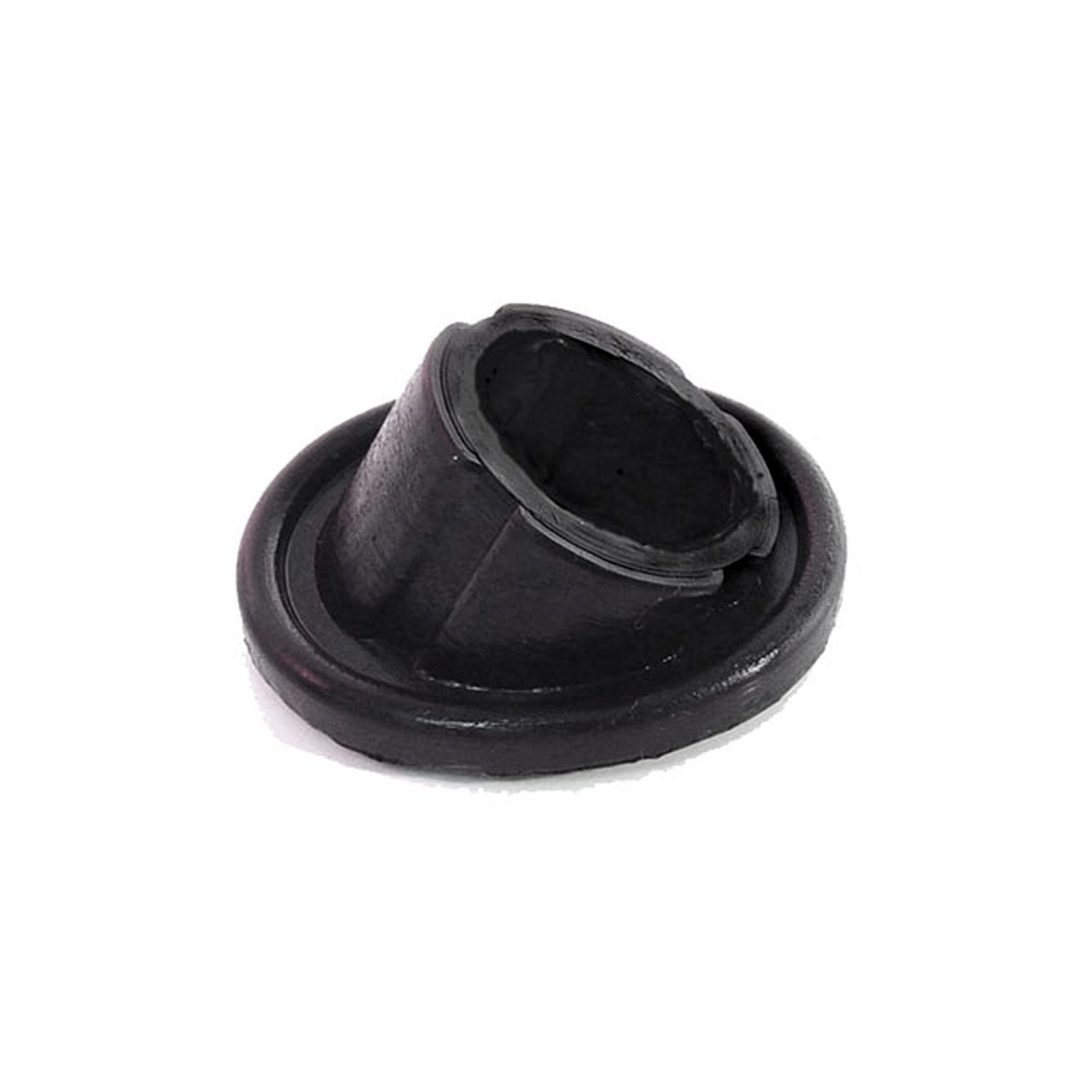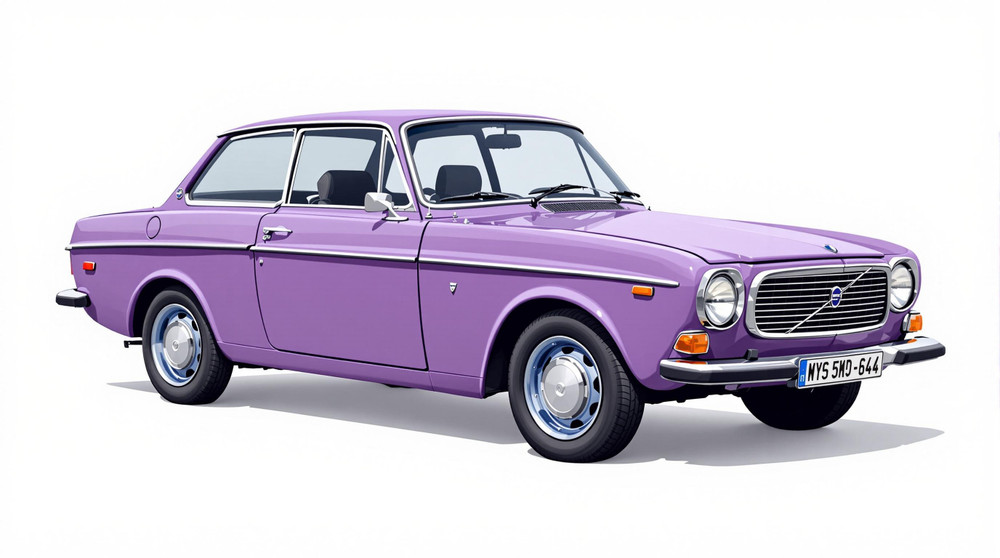Image of 1973 Volvo 142, Note: These illustrations use artistic license and may differ from actual historical models.
Performance Metrics
Fundamental Metrics
Emotional Appeal
MMP Rating
| Engine Specifications | |
|---|---|
| Engine: | B20 I4 |
| Displacement: | 1986 cc |
| Horsepower: | 82-112 hp |
| Torque: | 112 lb-ft |
| Compression Ratio: | 8.7:1 |
| Ignition System: | Electronic ignition |
| Cooling System: | Water-cooled |
| Performance Specifications | |
| 0-60 Time: | 12 seconds |
| 1/4 Mile Time: | 18 seconds |
| Top Speed: | 105 mph |
| Transmission and Drive | |
| Drive Type: | Rear-wheel drive |
| Transmission Type: | 4-speed manual or 3-speed automatic |
| Fuel and Efficiency | |
| Fuel System Type: | Fuel injection |
| MPG: | 20-25 mpg |
| Dimensions and Brakes | |
| Brakes: | Disc brakes front, drum brakes rear |
| Wheelbase: | 96.5 inches |
| Weight: | 2,400 lbs |
Note: Specifications for classic cars are given to the best of our ability, considering the limited and variant data available.
Unveiling the Stalwart of Scandinavian Design: The 1973 Volvo 142
The year 1973 marked a notable chapter in automotive history with the production of the Volvo 142, a vehicle that encapsulated Swedish engineering prowess and understated elegance. Born from the stable of Volvo, a marque synonymous with safety and durability, the 142 model was a testament to the company's commitment to building cars that were built to last. With its origin tracing back to the late 1960s, this particular iteration arrived at a time when car design was pivoting towards more practical and robust aesthetics. A unique fact that car enthusiasts may find fascinating is that the Volvo 142 was instrumental in pioneering advancements in vehicle safety, including becoming one of the first cars to feature seat belts as standard equipment.
Design and Innovation: A Study in Swedish Minimalism
The exterior styling of the 1973 Volvo 142 was a blend of functionality and subtle sophistication. It featured clean lines, a boxy silhouette, and an upright stance that exuded confidence without ostentation. The interior was equally pragmatic, with an emphasis on comfort and visibility. High-quality materials were used throughout, from the durable upholstery to the well-crafted dashboard. Technological features such as energy-absorbing crumple zones and a safety cage were ahead of their time, showcasing Volvo's dedication to passenger protection. Color options for the 142 ranged from subdued hues like Cypress Green and Metallic Blue to more vibrant choices like Orange and Yellow. Among these, the darker shades often found favor for their ability to complement the car's serious demeanor. The two-door sedan body style was particularly iconic, though other options included a four-door sedan and a sporty GT version.
Historical Significance: Paving the Way for Modern Safety
The 1973 Volvo 142 stood out for its pioneering safety features which would later become industry standards. Its impact on automotive design is evident in how modern vehicles prioritize occupant protection. The integration of crumple zones and reinforced passenger compartments are direct legacies of innovations first seen in models like the 142.
Performance and Handling: A Steady Companion on Any Road
Performance-wise, the Volvo 142 was not designed as a sports car but rather as a reliable daily driver. It boasted respectable figures for its era, with top speeds hovering around 100 mph and acceleration from 0-60 mph achievable in under 13 seconds. Handling was assured and predictable; it absorbed bumps commendably while maintaining composure on windy roads. Drivers often praised the vehicle for its solid feel, reassuring engine hum, and straightforward driving dynamics.
Ownership Experience: Reliability as Second Nature
The Volvo 142 excelled as a daily driver but also found niches as a show car and even in rally racing due to its robust construction. Maintenance was straightforward, making it a favorite among DIY enthusiasts. Reliability was one of its strong suits; however, owners should be mindful of potential rust issues—a common affliction for cars of this era.
Fun Facts: The Celebrity Swede That Conquered Roads Worldwide
The Volvo 142 might not have been flashy, but it did catch the eye of celebrities like singer-songwriter Ted Gärdestad who owned one. While it didn't break speed records, it set benchmarks for safety standards in vehicles. Despite criticisms about its conservative design or modest performance figures compared to some contemporaries, it maintained a loyal following due to its reliability and ease of maintenance.
Collector's Information: A Vintage Gem with Enduring Appeal
Today, collectors value the 1973 Volvo 142 for its classic appeal and historical significance. While exact production numbers are elusive, it's estimated that several hundred thousand units were produced during its run. As for value range, well-preserved models can fetch anywhere from $5,000 to $20,000 depending on condition, originality, and provenance—showing an appreciation trend among classic car enthusiasts.
Conclusion: The Legacy of Practicality and Protection
In summary, the 1973 Volvo 142 stands as a paragon of Scandinavian automotive design—practical, reliable, and remarkably safe for its time. Its legacy endures not just in collector circles but also in how it shaped our expectations for what constitutes a well-built vehicle. For those who value heritage over horsepower, this Swedish stalwart remains an enduring symbol of thoughtful craftsmanship.
1973 Volvo 142 Catalog of Parts
 1973 Volvo 142 Wiper Post Gasket. For wiper transmission-SM 35-BWiper Post Gasket. For wiper transmission. Two used per car. Each
1973 Volvo 142 Wiper Post Gasket. For wiper transmission-SM 35-BWiper Post Gasket. For wiper transmission. Two used per car. EachWhy Choose Metro?
For over 100 years, Metro Moulded Parts has been the pinnacle of quality in classic car restoration parts. Our commitment to precision and authenticity in every component ensures a perfect fit and an OEM-level appearance.
- Expert Craftsmanship & Quality: Each part is a testament to our dedication to reliability and perfection, crafted from original designs and thoroughly tested.
- Advanced Technology: We use cutting-edge techniques to create flawless, long-lasting parts that surpass others in performance.
- SuperSoft Sponge – The Ultimate Door Seal: Not only are our door seals 30% softer than competitors', but they're also guaranteed to never leak. They effectively reduce wind and road noise, enhancing your classic car's comfort and driving experience.
- Proudly American: Our parts are a product of American craftsmanship, made in the USA with a spirit of excellence and heritage.
- Unrivaled Warranty: We back our products with a 30-year industry-leading warranty, a testament to our confidence in their quality.
Join us in preserving the legacy of classic cars with parts that are crafted for perfection, not just made.

